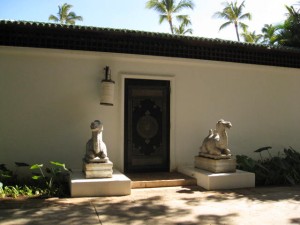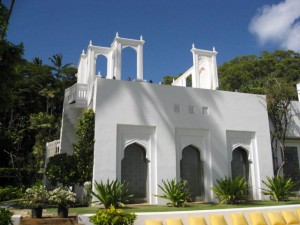 Marti loves horses, so we had to go riding on this vacation. Fortunately, a short drive north of Kaneohe on Kamehameha Highway is the 4000 acre Kualoa Ranch, relatively well-known as the filming location for a number of blockbuster movies, such as Jurassic Park and Tears of the Sun, as well as the hit TV series Lost, which ended its run a few weeks ago.
Marti loves horses, so we had to go riding on this vacation. Fortunately, a short drive north of Kaneohe on Kamehameha Highway is the 4000 acre Kualoa Ranch, relatively well-known as the filming location for a number of blockbuster movies, such as Jurassic Park and Tears of the Sun, as well as the hit TV series Lost, which ended its run a few weeks ago.
By 7:45 am this morning, we had arrived at the ranch; we watched as the guides saddled and prepared the horses, and shortly after 8, we set out on the trail. There were five women riding, all of us on boy horses. My sister Marti was in the lead, riding Sas (short for Saskatchewan); I followed on Romeo; and my sister Debbie rode behind me.
The day was warm but cloudy — a good day for a ride because without direct sun, it was not too hot. The horses were patient and well-trained, and although most of us were complete novices at riding, we didn’t encounter any glitches like a rider losing control of her horse. At various points along the trail, we stopped to admire the view.
We are looking down on the fishpond:
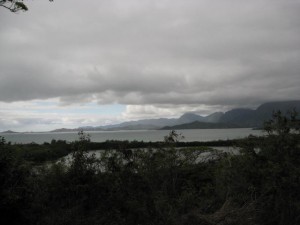
In the distance is the famous landmark, Mokoli’i Island, or Chinaman’s Hat.
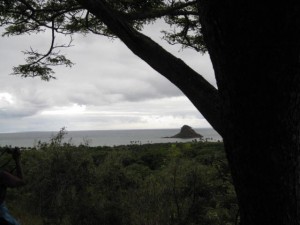
Toward the end of the hour-long ride, I looked up at this volcanic ridge:
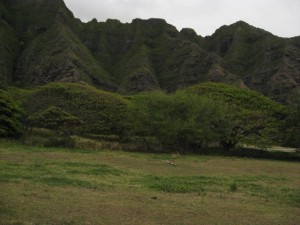
I can well believe the brochures, which tell us that
The ranch terrain varies from dense rainforest to broad open valleys and from beautiful white sand beaches to verdant cliff faces. It is truly a paradise for outdoor recreation with many places accessible only by horseback, on an all terrain vehicle, or by hiking.
Kualoa Ranch is also one of the most historically significant destinations on Oahu because in ancient times, this was a sacred place. Since 1850, it has been a working cattle ranch, and continues today as a family-owned and operated property, with its mission to serve as a role model for land stewardship.
